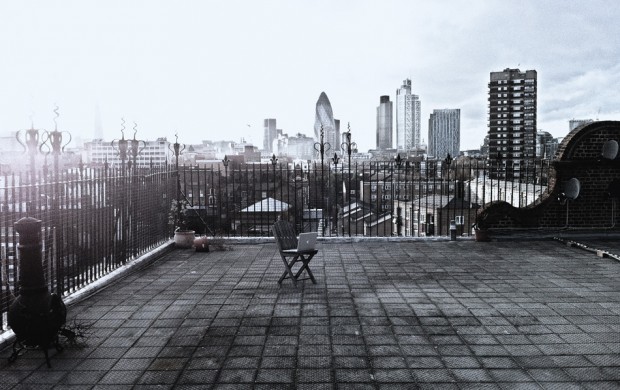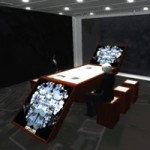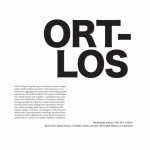Ortlos Manifesto
ORTLOS[1] must be a kind of matrix, an infinite, constantly changeable field of the creative entries of those who shape it. From a certain size on, the constructs show the first signs of self-organization. And so it has been with ORTLOS right from the beginning. It is a kind of virus that is spreading, and although in the background, it makes one gradually sink into a world whose laws correspond to a different logic.
We believe in a creative trans-disciplinary networked collaboration. We are less interested in what things mean per se, but more in how things relate to each other. It is less the question how things function or how they look like, but more what they perform. We need to understand what our doing does. This can be described as performative design, where design doesn’t follow form or function, but rather follows the feedback.
Architectural design is no longer the expression of a single individual as was still the case in Romanticism and classical Modernity. Neither, however, is it the expression of a collective as in the middle of the 20th century. Rather, it is the expression of a platform, a network of influences, continuously being reorganized by all participants. Discursive forums and artistic practices that do not aim for any durability take the place of the individual work of a single artist or group of artists. Their temporary nature creates the precondition for the inherent opportunity for constant change.
Since architecture has an ethical problem with everything which is not static, in its traditional role providing shelter and for that reason feeling obliged towards a culture of stasis, it represents a challenge to dispense with idealized ideological notions. The first steps in a new direction are primarily as follows: improved communication between the user and the developer, as well as the generation of complex systems of parametrical procedural decisions. The starting point would initially be a simple understanding of the surroundings which influence our ways of living.
ORTLOS is an instrument for the nomadic working methods. Ideal for ORTLOS projects would be to spread everything out onto a single page, on one and the same surface: real events, the historical conditions, the outlines of Ideas, individuals, social groups and constellations. A re-emergence, with no interest in categorization of typologies, but in intersections and relationships.
By understanding the network as working space, space for communication and collaboration, and not presentation, we believe that the design of visual language is an important step where the visualization of augmented and mixed realities takes place. Talking of spacelessness or of the elimination of space merely obscures the fact that is not only the cyberspace creates new spaces, new property and new kinds of power but that, in fact, these manifest in real space. From a market strategy point of view, a lethal competition is building up between what is real and what is virtual. Non-places are arising from the collapse of localities and bases in the process of globalization, which is unprecedented in history. The architecture is challenged to catch up with those tendencies.
If architecture as a discipline wants to make step forward and be compatible with progress of the civilization development of the 21 century, as well to be understood as option to the design the future world we would like to have and not the one we are forced to consume, then the new generative processes and design strategies has to be introduced. The architecture of the networks open ups the discussion about the possibilities to find out the answers beyond the architectural dogmas, rigid academic institutions and “schools”, but rather an inspired investigation into other fields and phenomena of the present time.
Now we have new resources. It is not the oil, coal and gold, which we have exploited for so long time, which gives us a power anymore, but the raw material of the future is the Information. Today, the interruption of access to information is one of the most effective means of crippling Institutions, whether they be part of military or civil, private or state-owned undertakings. For although the monuments of power are still standing, impossible to ignore and solid, the exercise of power is less visible and localizable than ever before. Applied to architecture this entails the possibility of exercising disobedience towards one’s own profession. That is what is new about the ‘new architecture’.
[1] Ortlos is German for „placeless“. It is also the appropriate designation for a virtual platform and discussion forum dealing with innovative architecture, urban planning, media theory, art installations, and interface design. Architects, web designers, media theorists, media artists, and information-technology specialists from around the world work together off-site, independent of a specific workplace. The conceptual and design process goes on in collaboration in a trans-local environment, created out of a network of virtually combined workplaces.












You must be logged in to post a comment.